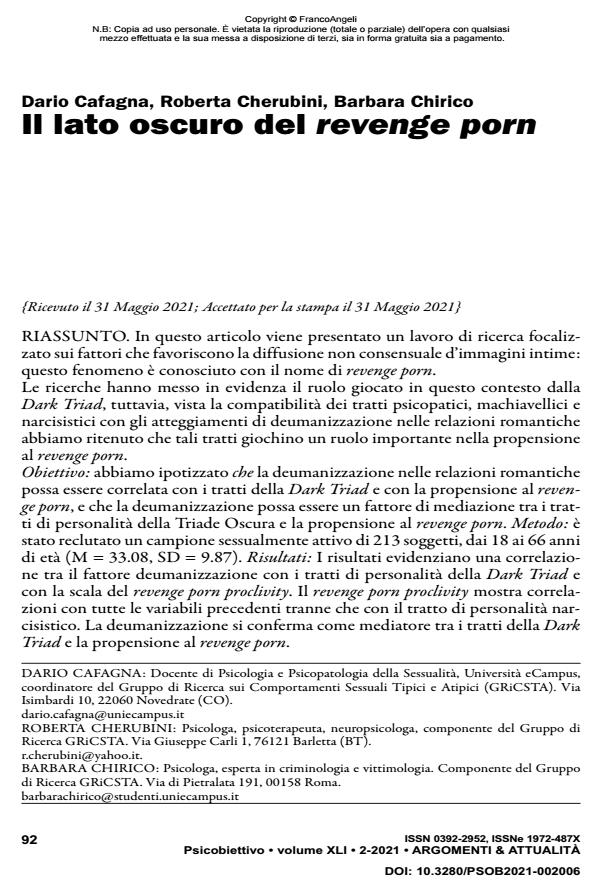The dark side of revenge porn
Journal title PSICOBIETTIVO
Author/s Dario Cafagna, Roberta Cherubini, Barbara Chirico
Publishing Year 2021 Issue 2021/2
Language Italian Pages 16 P. 92-107 File size 285 KB
DOI 10.3280/PSOB2021-002006
DOI is like a bar code for intellectual property: to have more infomation
click here
Below, you can see the article first page
If you want to buy this article in PDF format, you can do it, following the instructions to buy download credits

FrancoAngeli is member of Publishers International Linking Association, Inc (PILA), a not-for-profit association which run the CrossRef service enabling links to and from online scholarly content.
This article presents a research work focused on the factors that favor the non-consensual dissemination of intimate images, known as revenge porn. Research has highlighted the role played in this context by the Dark Triad, however, given the compatibility of psychopathic, Machiavellian and narcissistic traits with the attitudes of dehumanization in romantic relationships, we believed that this factor plays an important role in the inclination towards revenge porn. Objective: we hypothesized that dehumanization in romantic relationships may be correlated with Dark Triad traits and revenge porn proclivity, and that dehumanization may be a mediating factor between Dark Triad personality traits and revenge porn propensity. Method: A sexually active sample of 213 subjects, aged 18- 66 years, was recruited (M = 33.08, SD = 9.87). Results: Results show a correlation between the dehumanization factor with Dark Triad personality traits and the revenge porn proclivity scale. The revenge porn proclivity shows correlations with all the previous variables except the narcissistic personality trait. Dehumanization is confirmed as a mediator between Dark Triad traits and revenge porn proclivity.
Keywords: revenge porn; Dark Triad; dehumanization; narcissism; psychopathy; machiavellianism.
Dario Cafagna, Roberta Cherubini, Barbara Chirico, Il lato oscuro del revenge porn in "PSICOBIETTIVO" 2/2021, pp 92-107, DOI: 10.3280/PSOB2021-002006